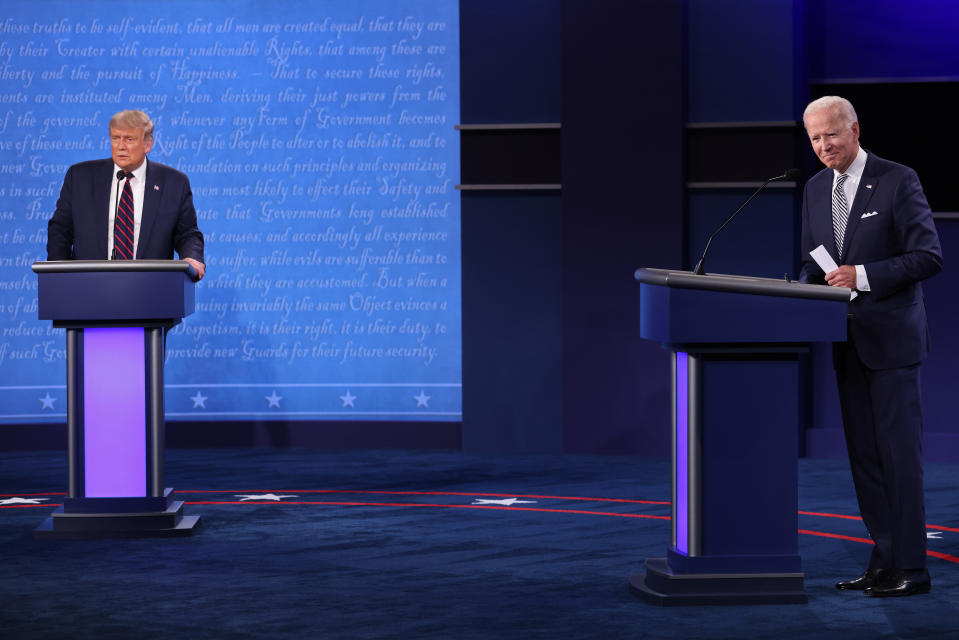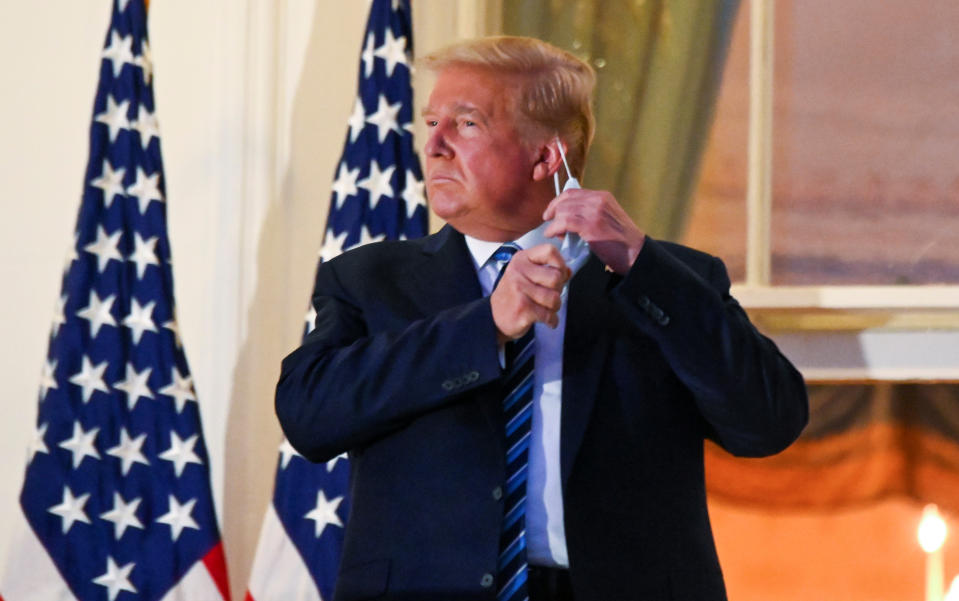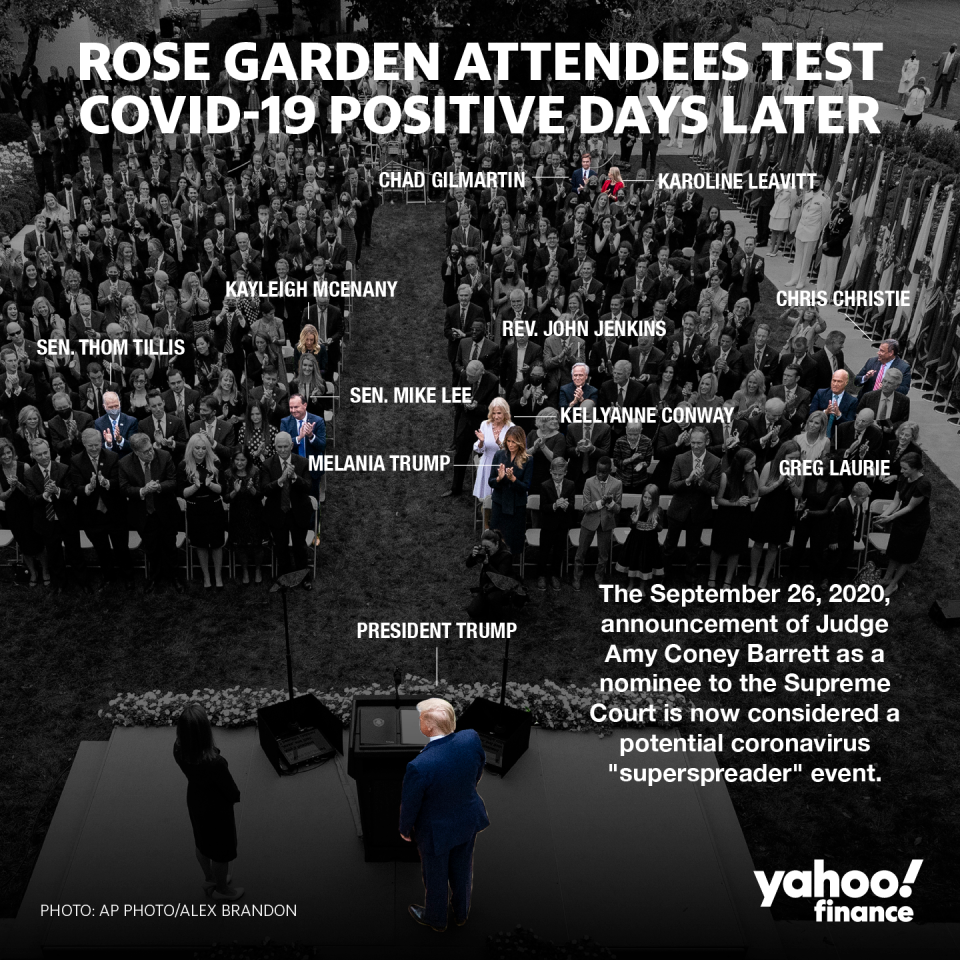President Trump's demand for in-person debate wasn't unreasonable, doctor explains
After testing positive for COVID-19 and being hospitalized last weekend, President Trump demanded an in-person debate with Democratic presidential nominee Joe Biden on Thursday, Oct. 15 after the the president’s doctor cleared him for public events as of Saturday, Oct. 10.
“There is therefore no medical reason why the Commission on Presidential Debates should shift the debate to a virtual setting, postpone it, or otherwise alter it in any way,” Trump’s campaign manager Bill Stepien said a statement.
The Commission on Presidential Debates had changed the Miami debate from in-person to virtual out of an abundance of caution, but the Trump campaign refused to accept the new format despite the president still being potentially infectious as of Thursday, October 9. (The debate has been cancelled.)

In any case, according to Dr. Roger Klein, a former FDA and CDC adviser, the president had a decent argument for being able to debate in person.
“I believe the in-person debate can be safely held because any concerns about remote risks could be resolved through transmission precautions such as implementation of spacing, with or without physical partitions, and medical mask-wearing during transport,” Klein, currently a policy advisor at the Heartland Institute, a libertarian think tank, told Yahoo Finance.
‘It is likely a patient so described would no longer be contagious’
When exactly Trump was first infected with the virus and began showing symptoms is unclear, though reports indicate that the president began showing symptoms around October 1. Details of Trump’s care remained spotty, and it’s unclear how severe his COVID-19 case became.
Conley cites CDC criteria, yet CDC clearly says severe #COVID19 cases are infectious for 20 days. And his viral load might be down, but he also has synthetic antibodies. Synthetic doesn’t equal immunity. And dexamethasone corticosteroid means even longer infectiousness. pic.twitter.com/JeCrjT1H3Z
— Eric Feigl-Ding (@DrEricDing) October 11, 2020
The president was hospitalized on Oct. 2 after his symptoms worsened. He was given supplemental oxygen and received treatments like antiviral medication remdesivir, the corticosteroid dexamethasone, and an antibody therapy cocktail. Trump left the hospital on Oct. 5 and returned to the White House, where 24/7 medical care is available to him, despite still being hampered and contagious at the time. The president’s conditioned apparently improved as the week progressed, resulting in Physician to the President and U.S. Navy Commander Sean Connelly clearing the way to Trump returning to public events.
Klein noted that if symptoms indeed subsided, “the individual is probably no longer contagious 10-14 days after the onset of disease.” And while Klein stressed that he could not speak definitively because he did not treat the president himself, the former CDC advisor added: “Speaking generally, it is likely a patient so described would no longer be contagious.”

‘We had a super-spreader event in the White House’
While President Trump could have theoretically debated Biden on Oct. 15 in a safe manner, the events over the last few weeks illustrated alarmingly unsafe behavior from the president and those around him.
Several infections in Trump’s circle seem to have stemmed from the ceremony announcing Judge Amy Coney Barrett as the Supreme Court nominee on September 26 at the White House.
Since then, there have been at least 36 confirmed cases at the White House, including First Lady Melania Trump, Senior Counselor Hope Hicks, Press Secretary Kayleigh McEnany, advisor Stephen Miller, and former New Jersey Governor Chris Christie, and three members of the press.

The vast majority of attendees at the Sept. 26 event did not wear masks or practice social distancing despite public health guidance. Dr. Anthony Fauci, director of the National Institute of Allergy and Infectious Disease, called the White House outbreak “preventable.”
"We had a super-spreader event in the White House,” Fauci told CBS news, “and it was in a situation where people were crowded together and were not wearing masks.”
Three days later, at the first presidential debate, all of the members of Trump’s family except for the first lady opted out of wearing masks after they arrived and were not tested. Biden and his team were tested for the covid-19 and all were negative.
Plexiglass dividers were installed for Wednesday night’s vice presidential debate, although Pence and his team initially voiced objections.
Editor’s note: This post was updated to note that Dr. Klein is a policy advisor at the Heartland Institute and embed a tweet from Dr. Eric Feigl-Ding.
Adriana Belmonte is a reporter and editor covering politics and health care policy for Yahoo Finance. You can follow her on Twitter @adrianambells.
READ MORE:
Implications of President Trump contracting COVID-19 'very much to be determined'
Coronavirus spikes are 'driven more by our behaviors,' doctor explains
'We need to take flu off the table' amid coronavirus pandemic, doctor says
Read the latest financial and business news from Yahoo Finance
Follow Yahoo Finance on Twitter, Facebook, Instagram, Flipboard, LinkedIn, YouTube, and reddit.
